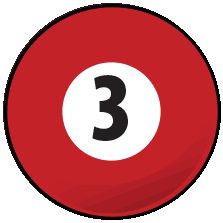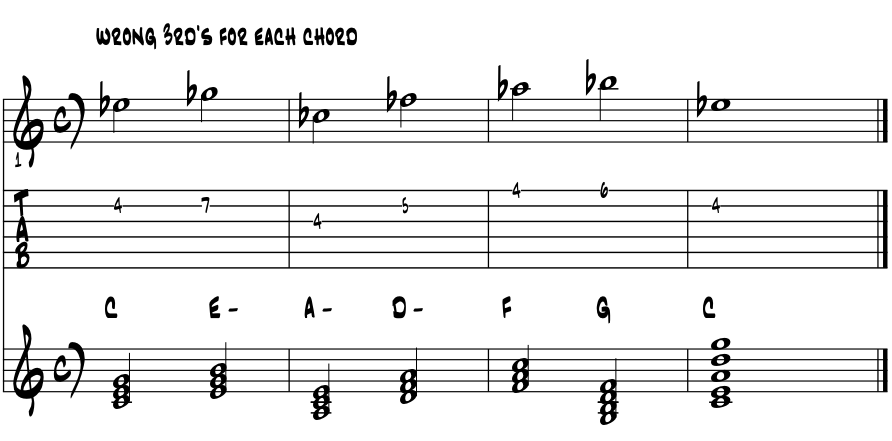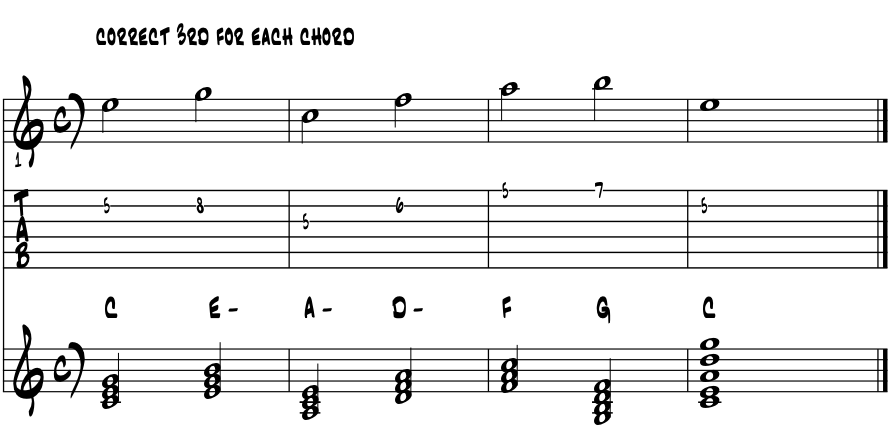"... music should always be an adventure ..." '... we all get to be new at improvising music :) ~ learning the melodies of Americana ~ ~ thinking root to root wins the day ~ ~ taking chances ~ |
"If there's no plan, that's once less thing to go wrong." |
wiki ~ Joe Redington Sr. |
Nutshell ~ start improvisation. An age old way into Americana improvisation is by 'call and response' of a musical phrase. Words, pitches, rhythms, all can be included as back and forth we go together. Termed 'sing the line ~ play the line' in jazz, this old as the hills Americana spiritual format for learning our music connects mind, hand and hearts, moving through time with rhythm. Need a way into this? Well, we all did at one point :) Ready to begin? Cool. Please get these four bars under your fingers. Thinking in 'C.' Example 1. |
 |
Know the lick ? "Shortnin" goes way way back, learn it here if need be. So got the pitches under your fingers? Cool. No ? Just keep on trying, you'll get them if ya want to. Play and sing along with the notes and rhythms, 'scat sing' the line. Find these next few improv cliche variations by ear on the "Shortnin" lick. Example 1a. |
fixx audio
|
Worked out ideas. We can now call these 'worked out' licks. For we decided what to play before we played it. We figured how to play it. Play it once ( or if needed, 100 times to master the riff :) ... then we'll be able to play it again, from memory; by rote every time. Jazz leaning ? Then play these 'worked out ideas' through a few other key centers and guitar players, from different sets of strings and positions etc.; cycle of 5th's, chromatic, whole tone, sequences and rhythms. |
Cool ? Yep, same five notes. Just like the pitches and melodies created wind chimes the world over :) |
~ stgc / super theory game changers ~ |
Start on the fifth of whatever. This idea, of starting off on an improvised solo over changes on the 5th of 'whatever', is just a suggestion really. Today lifted quick from Beethoven's 5th of 1808 vintage, it's one potent pitch in the modes or within a tonic center. Loved by all, fifth of 'whatever' start note for improv are found in all the Americana styles. Theory known as the dominant, the 5th degree of a scale or the 5th of a triad ( 1 3 5 ) or any chord with color tones etc., Five 'dominates' in a key center in that it naturally can create a tension, a sense of going towards another note, which is often to release the tension to the more restive 3rd / Three / or root / One notes, again, of whatever, scale / arpeggio / chord, especially when working within a chosen key center. Starting off on Five can give us some mojo to move, spark off our Muse / creative with the first note of an improvised solo. Worth trying out for a while, till you find the magic, a trick when starting might be to find a rhythm to groove the note first, into what the band is playing, a 'one note samba' dance of the dominant :) |
|
The diatonic magics of seven pitches. In the relative major / minor scale, with it's seven unique pitches, we can create both melodies and chords to support them. The five note pentatonic groups, both major and minor, are included within the seven, we just add two pitches. C D E G A C D E F G A B While these added two pitches, 'F and B', truly energize the building up of diatonic harmony, they dramatically alter the improv magic of 'no bad pitches' of the pentatonic five. Your lines will sort of 'bump into them' as your improvisational skills develop, especially when soloing through chord changes where diatonic arpeggios and their permutations often point the way. |
| Historically, arpeggios and 'through the changes' styled melodic improv, dramatically evolved popular jazz between 1940 and 1960, when the 'pentatonics' roared back into the mix. Within a decade or so, there was a pentatonic re-revolution through the whole Americana improvisation tamale, which remains today in our musics as strong as it ever was. Paired with the blues hue, we can improv a wide style spectrum with coolness. |
The diatonic magics of seven pitches. In the relative major / minor scale, with it's seven unique pitches, we can create both melodies and chords to support them. The five note pentatonic groups, both major and minor, are included within the seven, we just add two pitches. C D E G A C D E F G A B While these added two pitches, 'F and B', truly energize the building up of diatonic harmony, they dramatically alter the improv 'no bad pitches' magics of the pentatonic five. Your lines will sort of 'bump into them' as your improvisational skills develop, especially through chord changes as the diatonic arpeggios and their permutations often point the way. , sing and play is the rule of the day :) . And because they all use the same pitches; pentatonic major / minor, major / relative minor and their chords, all sounds great together in many combinations (near endless), so no wonder that they have been used to compose a cool gillion songs or so over the last 1000 years or so. In our theories, we term this sharing of the same pitches for creating melody and harmony from the same group of pitches as 'diatonic.' 'dia - tonic' 'Dia' means 'through' and 'tonic' means 'tones.' So, 'through the tones' of what ... ? Most often through the seven pitches of our chosen key center, the 'key' a song is written in. |
We call this 'thinking diatonically.' So in all of our Americana styles of music, one basis of our improv is about simply making up new melodies from the same exact pitches we use to build up a song's written, original melody and its supporting chords. So using the same pitches for both melody and chords ensures our musical safety and well being through the improv process :) We call this 'thinking diatonically.' |
Thus thinking diatonically, we start with one pitch, then add a second then a third, for each of the chords. One by one we add in our pitches, and knowing which ones to add in relation to the supportive chords becomes our evolving understanding of the improv process in making music. For there's a method to madness of course, we simply think from the root of each chord. |
Improvisation start; one pitch at a time. Following an 'additive numerical basis' for understanding our musics, we can continue our improvisation studies with one note for each chord. Start with the root pitch? Sure, we're usually thinking from the root pitch anyway. So in this next idea, we 'improvise' using just the root notes of the One / Four and Five chords, in our somewhat abbreviated Americana song. Do these four bars a couple of times and try different rhythms too. Thinking in 'C' major. Example 1. |
scale degrees |
1 |
2 |
3 |
4 |
5 |
6 |
7 |
8 |
C major pitches |
C |
. |
. |
F |
G |
. |
. |
C |
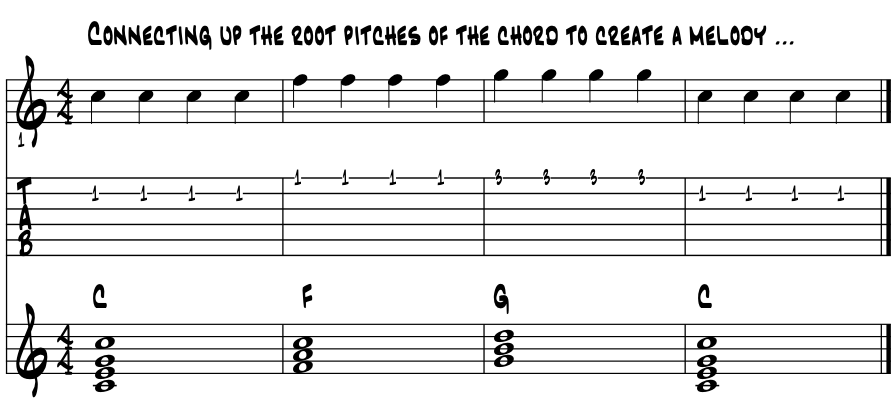 |
Root to root is often the best start, then we can hear both the chord changes in our improvised melodic lines and learn a song's bass line story. In this approach we're improvising 'through the chord changes.' |
Jazz the thing up a bit ... ? In this next idea we jazz up our chords by adding in the minor triads, combining to create the 'diatonic 3 and 3.' We then jazz up our melody by adding in their root pitches into our improvised melody. So we're just connecting the root pitches of chords to create an improvised line, a solid first step for musical improvising and hearing the chord changes in the melody line. Is this an original guide tone line? An original bass line story ? Probably. Example 1a. |
 |
Once we choose a key center, we get a set formula that creates a select group of pitches that can be strung along in any fashion to create a melody or stack them one atop another and sound them together to make chords for that key center. Their sequencing is a backbone of our song, of our own unique creativity and expressiveness, and the melody our improvisations. Expressing the emotional character and statement of the song in pitches. |
Quick review. We can start here by playing one note, soon two, then three and more, over each chord we are presented with. Sound the pitches in any old way really, repeating the phrase a few times and focusing in on our process. And as we sound a pitch in musical time and context, our now excited imaginations will eventually add in another note or two, might begin to vary the rhythms too. As our imagination kicks on in, and we connect it up with what our hands are sounding out, we're improvising :) For we've got ourselves in the groove and our imagination is suggesting pitches that flow forward in the moment as time passes by. |
As you hear these added pitches and ways to nuance them, just find them on your ax, figuring out how to sound them out. Just be patient, open and listen to what is being given from within your being. Starting with one pitch, remember that we've only 12 total. Let your imagination, curiosity, and eventual boredom and mistakes help find the rest. |
If you end up needing all 12 pitches, your probably a jazz leaning player. Use up to seven or eight with a few bends? That covers most of our other styles. Our own imagination is an amazing thing and eventually loves to do this all on its own, we just need to nourish it, give it a foundation, give it some room, then listen closely to the art in our hearts to be brought forth :) |
|
And back to one pitch. One more idea here before moving along. Here we simply state the tonic pitch over all of the chords and evolve a steady rhythm lick. Sing along and in the simplicity of the line, 'hear' where you want the line wants to go, and Muse will suggest. In 'C' major, thinking in a 'stately' manner. Example 1b. |
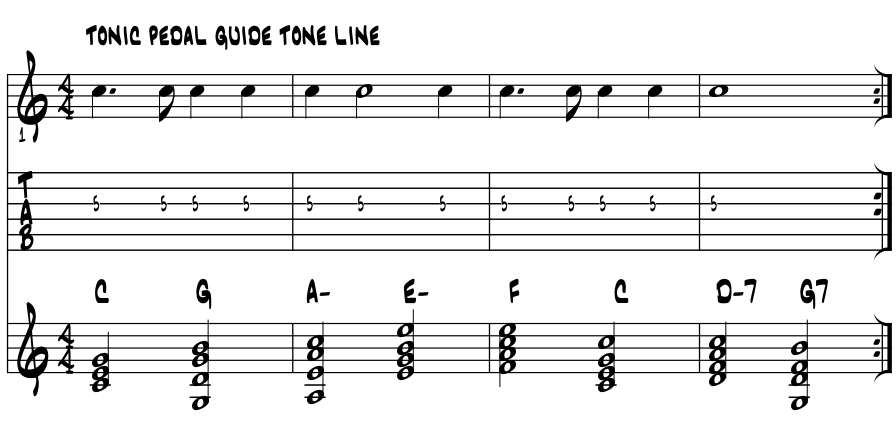 |
Hear anything? Keep trying and a pitch will come, then another then a flow of the pitches. Once the 'link' is made you'll have it forevermore and be improvising your way on down the road. Advanced jazz artists use a similar technique often; half timing a line to allow a new idea to bubble up. And surely some 'hit' songs have been written in just the same way as this last idea, one note. |
|
And one more for the pickers. Use a flat pick in your playing? Here's a Phrygian flavored one note pattern to feed the pick a bit. Look at all the black dots wow :) And over a clear clear clear bass line story. Example 1c. |
 |
"Imagination is more important than intellect." |
wiki ~ Albert Einstein |
The two pitches. To begin our two pitch improvisations, we build by adding in the 'relative' note of each of our chord's root pitches. This second pitch makes for the now ancient pairing, the 'relatives' Yin and Yang balance. Numerically the pitches are the roots One and Six in a major key and One and Three in minor. And these are the tonic pitches of our paired 'relative' key centers? Yep, they sure are. Examine the same letter named pitches that we use to create the relative major / minor pairing for 'C major and A minor.' Example 2. |
scale degrees |
1 |
2 |
3 |
4 |
5 |
6 |
7 |
8 |
C major pitches |
C |
D |
E |
F |
G |
A |
B |
C |
A minor pitches |
A |
B |
C |
D |
E |
F |
G |
A |
C major pitches |
C |
. |
. |
. |
. |
A |
. |
C |
A minor pitches |
A |
. |
C |
. |
. |
. |
. |
A |
How this works. So let's say your song has just one chord such as a 'C' major chord. Simply sound these two pitches over the chord, any old phrasing way that suits your fancy. Example 2a. |
 |
Sounds fine so far yes? We slipped in a new pitch right at the end. Did you hear it coming? Does it sound OK to you? As the line repeats, do any new additional pitches come forth from your imagination? Most times we end up wanting to simply fill in the spaces between the pitches in a scale wise manner. Very cool and common. |
Add in a chord. A 'relative' pitch probably wants to have its own chord too yes? Here we balance the major and minor colors together. Example 2b. |
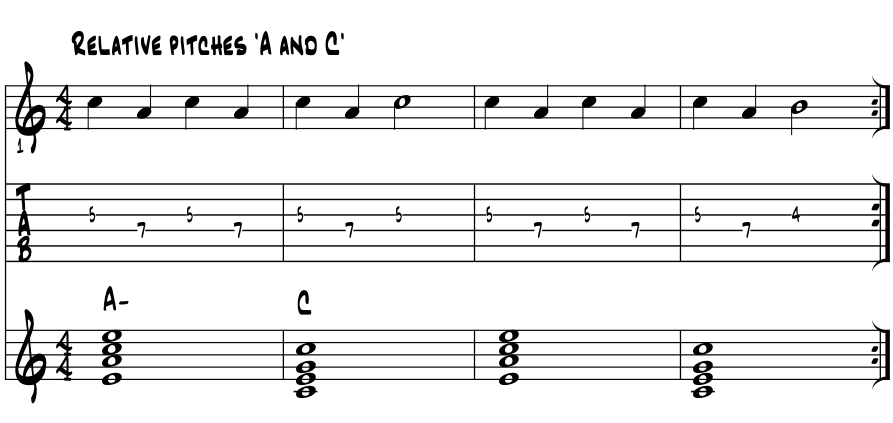 |
Motion to Four. In this next idea we go 'gospel' a bit with the major chords, with a back and forth motion between the One and Four chords. Adding in the root pitch of Four and its relative pitch to our melody line. Examine their letter name pitches and resulting sounds over the One and Four major chords. Example 2c. |
scale degrees |
1 |
2 |
3 |
4 |
5 |
6 |
7 |
8 |
major scale pitches |
C |
. |
. |
F |
. |
. |
. |
. |
minor scale pitches |
A |
. |
. |
D |
. |
. |
. |
. |
 |
Motion to Four in minor. As above but now in minor, One to Four in our relative minor key, same pitches, different emotional environment. Thinking 'A' minor. Example 2d. |
 |
The last idea is the basic magic trick that begins a journey of so much improv theory; swap relative major for minor and vice versa, minor for major. |
One / Four / Five in minor. Staying with the minor colors here, now adding in a diatonic Five chord to the progression. We add in Five's root pitch and relative to our melody and jazz it up a bit with 1/8th notes too ! Please examine the letter name pitches and their sounds. Example 2e. |
scale degrees |
1 |
2 |
3 |
4 |
5 |
6 |
7 |
8 |
major scale pitches |
C |
. |
. |
F |
G |
. |
. |
. |
minor scale pitches |
A |
. |
. |
D |
E |
. |
. |
. |
 |
One / Four / Five in major. Same strategy here but back into the major tonality. Example 2f. |
scale degrees |
1 |
2 |
3 |
4 |
5 |
6 |
7 |
8 |
major scale pitches |
C |
. |
. |
F |
G |
. |
. |
. |
minor scale pitches |
A |
. |
. |
D |
E |
. |
. |
. |
 |
Cool ? One / Four and Five ? Three chords and the truth with some 'jazz it up ?' |
With any major chords. So let's say your song has a lot of different major chords, in whatever ordering is necessary to tell your tale. Finding the chords, their root and relative pitches will always give us a couple of pitches to work with to spin up a melody line. Ex. 2g. |
 |
With any minor chords. What's good for the major is good for the minor! And vice versa of course :) Ex. 2h. |
Both of these last two ideas are a bit of a mashup surely but none the less, arrived back to our starting point. Two different permutations of the two pitches, so more about focus than art probably but totally inside too, and that's a good place to start, generally :) |
Find the third of each triad. This last idea in this thread finds us hunting for the 3rd of each triad to create a guide tone line. As the 3rd of each triad / chord determines its major / minor quality, we've got to be on the right note or we're gonna sound off. Here's the diatonic '3 and 3' in 'C', with all the wrong 3rd's. Example 3. |
Ouch ! Now corrected. Here's the diatonic '3 and 3' in 'C', with all the correct 3rd's. Example 3. |
Wow. Yep, getting into the correct 3rd of the triad sure has a way of setting things just right :) And then we've the rockin' blue minor 3rd dance floor fillin' honk ! |
Space in the line. Not only does space have a sense of swing, so space in musical lines creates opportunity to collaborate, and focus together on downbeats in the near future, structural point downbeats to identify phrases and sections of the song you're performing. |
Review. So have a basis for coming up with a couple of pitches for any chord you come across? Cool. There's all sorts of ways into this improv biz and this 'one pitch at a time' works like a charm. Other improv topics ...? |


